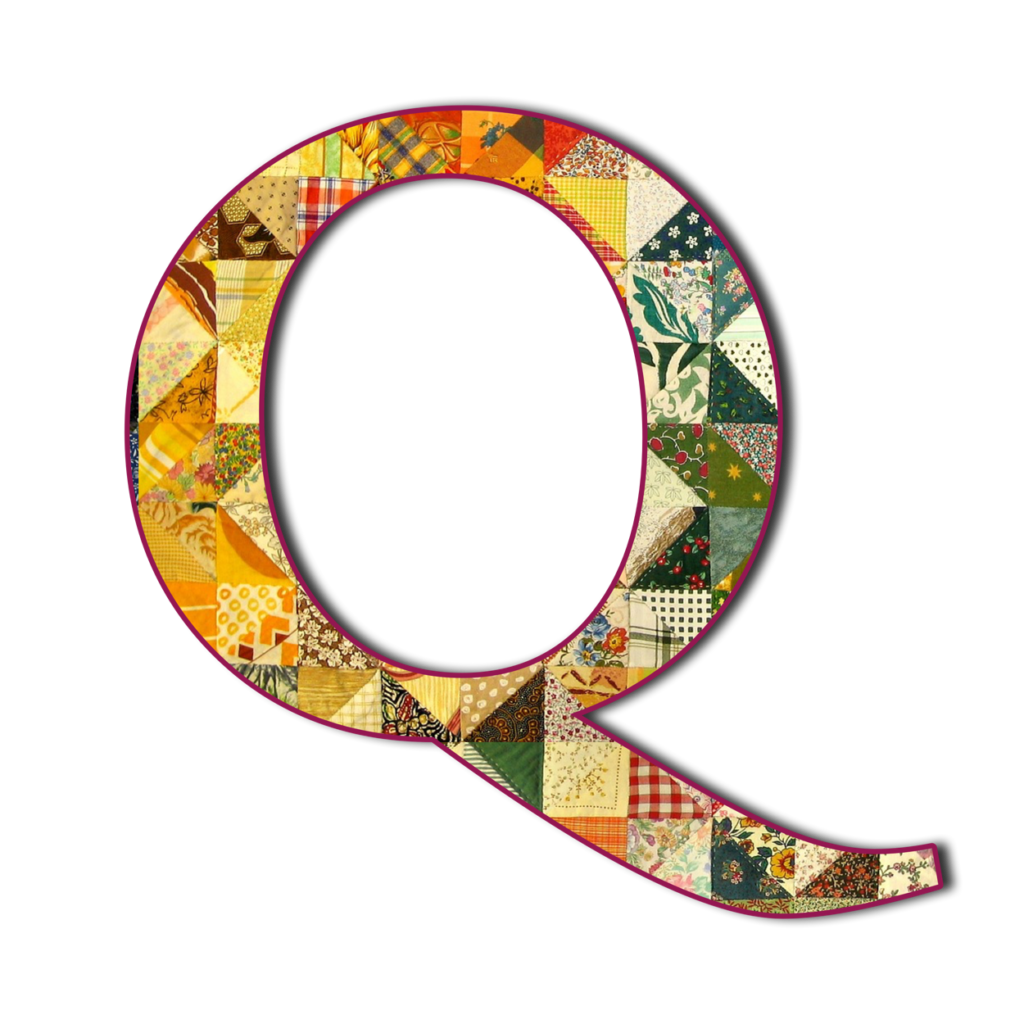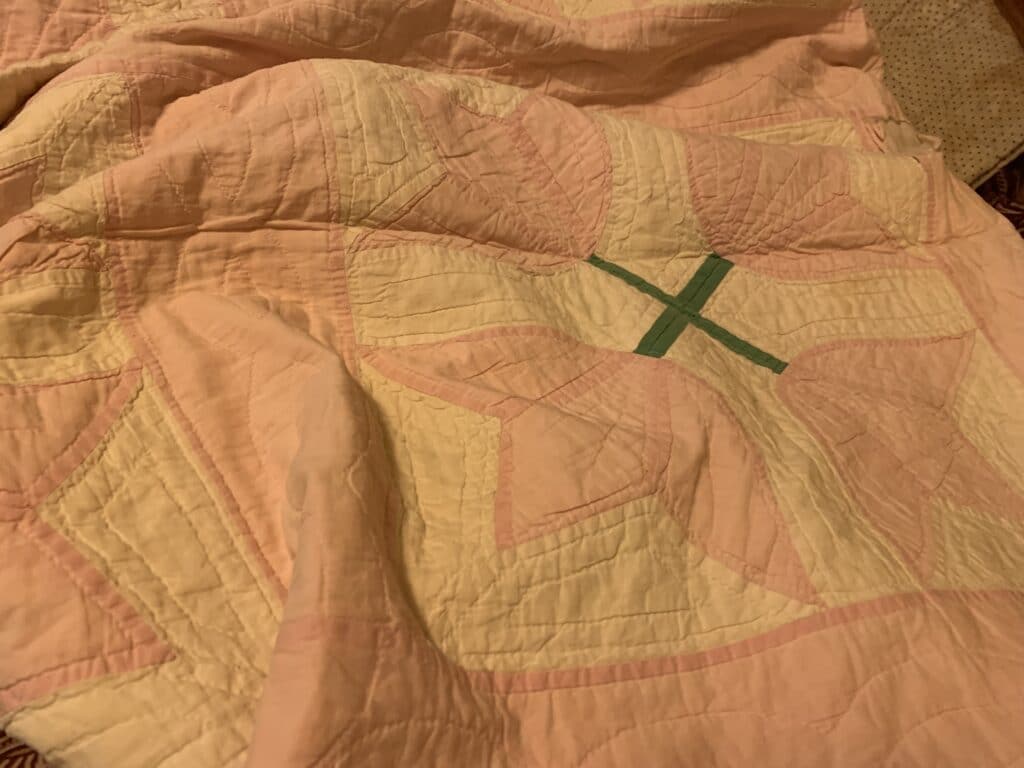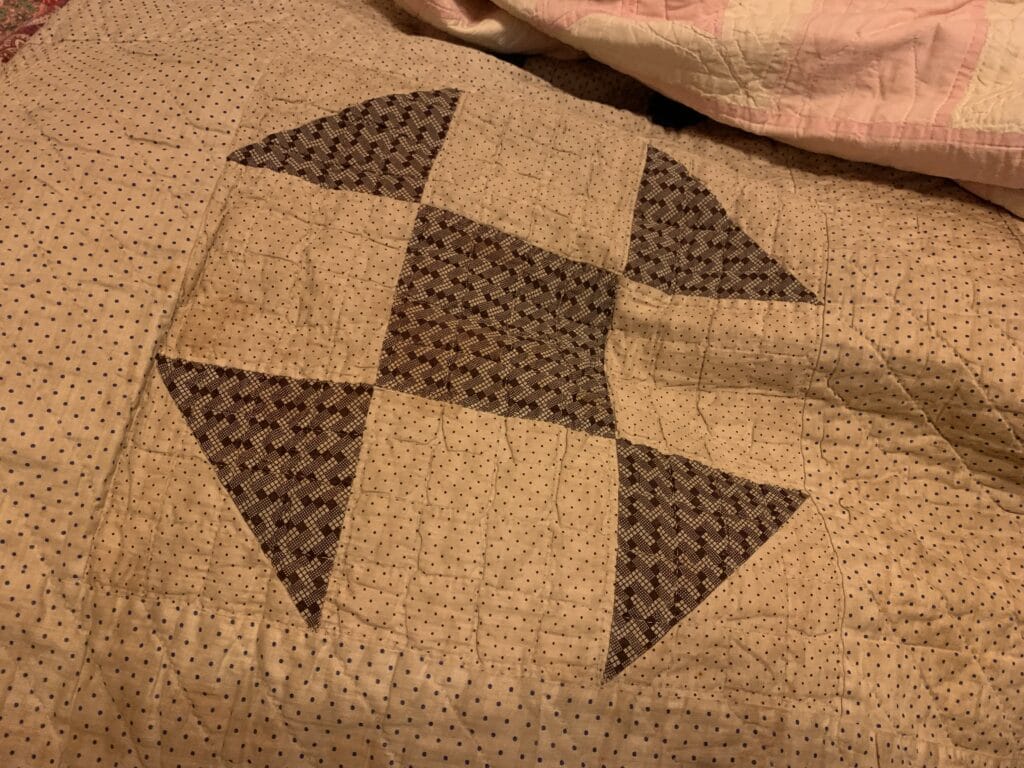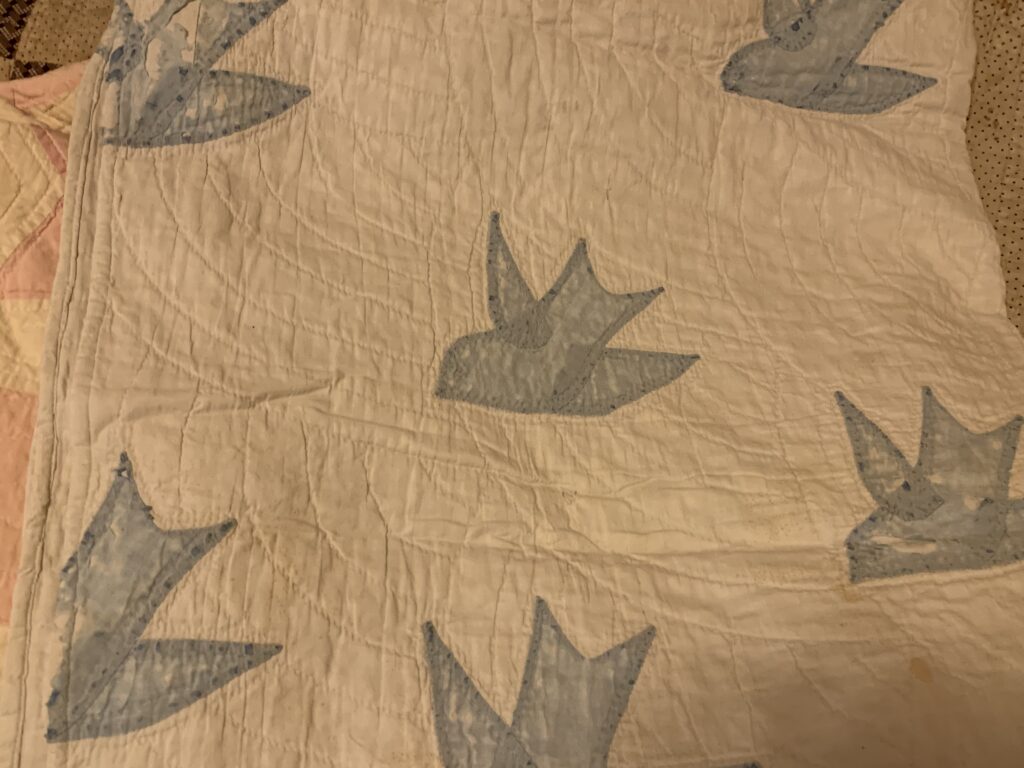
Whenever I think of the word quilt it brings to mind two specific quilts, before I move on to all the other quilts I’ve known as well as the people who make them.
One is a vibrant large Tumbling Block pattern quilt my maternal Grandmother pieced for me before she died. I was My mom had the Ladies Aid Society of Grandma’s church find the edging and quilt it. I remember playing in the basement of the church. She made a quilt for each of her grand daughters. I was born in 1957 and she passed away in 1960 at the age of 77. I don’t think I will be doing hand quilting when I’m in my mid-70s. The fabrics she used for this quilt were new.
The other one I think of is a very, very heavy patchwork, crazy quilt made of used fabrics by my paternal great grandmother. The fabrics were dark but richly colored, heavy winter-worthy fabrics. Bits of thread tied into knotted bows joined the layers of fabric together. It had no quilted overstitching. There was one piece of red fabric in it that was quite irregularly shaped; I love that little piece of material. I used to wonder whose dress it was from and what wonderful things she might have done while wearing it. There were velvets and all sorts of textures. I loved it.
My paternal grandmother died three years before I was born, so I never had the chance to ask her who made it or where the fabric came from.



I said it was a heavy quilt. It really was. It was almost like sleeping under a weighted blanket, like the ones that are popular now.
I slept in the unheated upstairs of a farmhouse. That is how lot’s of farmhouses were built at the turn of the 19th to 20th Century. That quilt kept me toasty warm, except for my nose. Being kept warm by the clothes of previous generations was comforting in a way that is difficult to describe. For me, there was a palpable continuity from previous times and peoples through this bedding.
I have been told that old heavy quilts sometimes have other quilts inside them almost like a batting. At the end of this post on the Southern Charm Quilts, a quilt inside that the author mended a quilt is discussed.
There is also the old heated discussion about underground railroad quilts. Some say quilts were used as signaling devices on the Underground Railroad. Others say that while this is a lovely story, there just isn’t evidence to support the use of this code before or during the civil war. I tend to believe what the Smithsonian has to say about historical topics. Read the Smithsonian Folklife article and see what you think.
I’m not a quilter myself, but I love sewing handiwork.
I don’t believe enslaved people had time or fabric to spend making coded quilts that seem like common sense and that were never heard of before 1999. I believe in oral history but I don’t think this story/belief is the same.
I have a quilt my grandmother made on my bed now. It is one of the heavy ones you mention above. I know she used to recover pillows on top of the worn out one so doing the same with quilts seems highly possible. I used to have a quilt my great grandmother made, but it got lost in one of my moves.
I have made a quilt for each of my grandchildren. I finished the last one the Christmas before the pandemic began. As they started going off to college they wanted me to make them bigger quilts to take with them! No way that was happening. I am now 75 and not planning to make another 14 bigger quilts. LOL. I used African print scraps to make the quilts but they were more on the crazy quilt pattern.
Kristin, Oh I don’t believe that either. The stories, that seem like modern inventions to me too, are, I suspect, to assuage some of the guilt of crimes of slavery. I think the story is one of white women in the north using quilts to signal changes or current states of the paths to be taken. My family never had access to extra anything as far as I can tell, so they were frugal and reused everything they could: worn out quilts, worn out cloths, and worn out other fabrics. Rag rugs as well as quilts are evidence of the “use it up, wear it out, make it do” mentality that passed dow through my family.
womenslegacy recently posted…Quilting Fabrics, Quilting Lives
14 more quilts! NO WAY!!!
womenslegacy recently posted…Quilting Fabrics, Quilting Lives
Both my Mom and my MIL were quilters and my house is filled with their handiwork. Each quilt has a story. Each, a special place in my heart. All of my grandchildren snuggle down under a handmade quilt when they come to stay.
I remember playing under the quilts on the frame in the church basement when my Mom’s church sewing circle got together.
Oh, the adventures we had! We just learned never to stand up…
Quilts are stories, the making of them was communal. The sewing circles were probably as important as what they produced.
womenslegacy recently posted…Quilting Fabrics, Quilting Lives
I was not born into a family of quilters. And yet, I have a memory of a coverlet that warmed me as a little girl. It wasn’t a quilt, not that I can remember. But one day, my exploring fingers found a zipper and I had to unzip the coverlet. Inside was a quilt. The quilt wasn’t in good condition, as I recall. It somehow felt wrong to expose it, so I zipped the coverlet back up and never opened it again. I don’t remember what happened to the coverlet and I never asked about the quilt that was inside. I don’t remember ever seeing a quilt in the homes of any of my relatives, either. I have read that there is not much of a quilting tradition in my ethnic group (my parents’ parents were all Jews who emigrated from Eastern Europe) but I wish I knew more about this coverlet with the quilt inside, especially after reading your post.
Alana, We all have questions that never presented themselves. Just treasure the memories they trigger.
The quilts are so pretty. I love the idea of clothes of an older generation keeping a new generations snug as they sleep.
Thanks. The western obsession with new and shiny everything robs us of snug comforts.